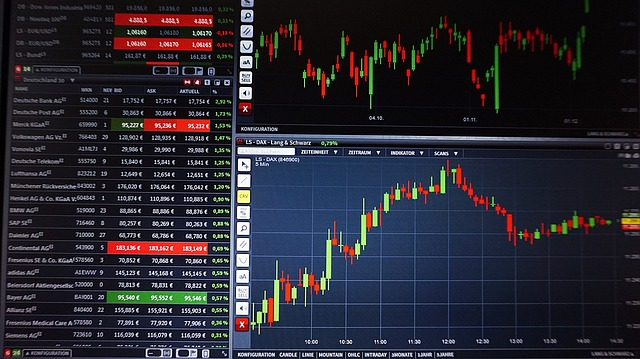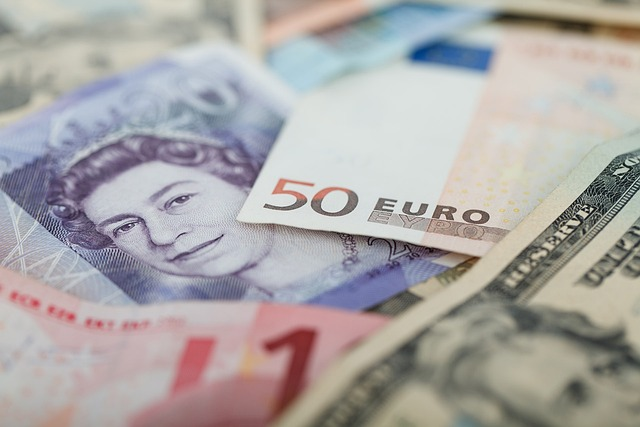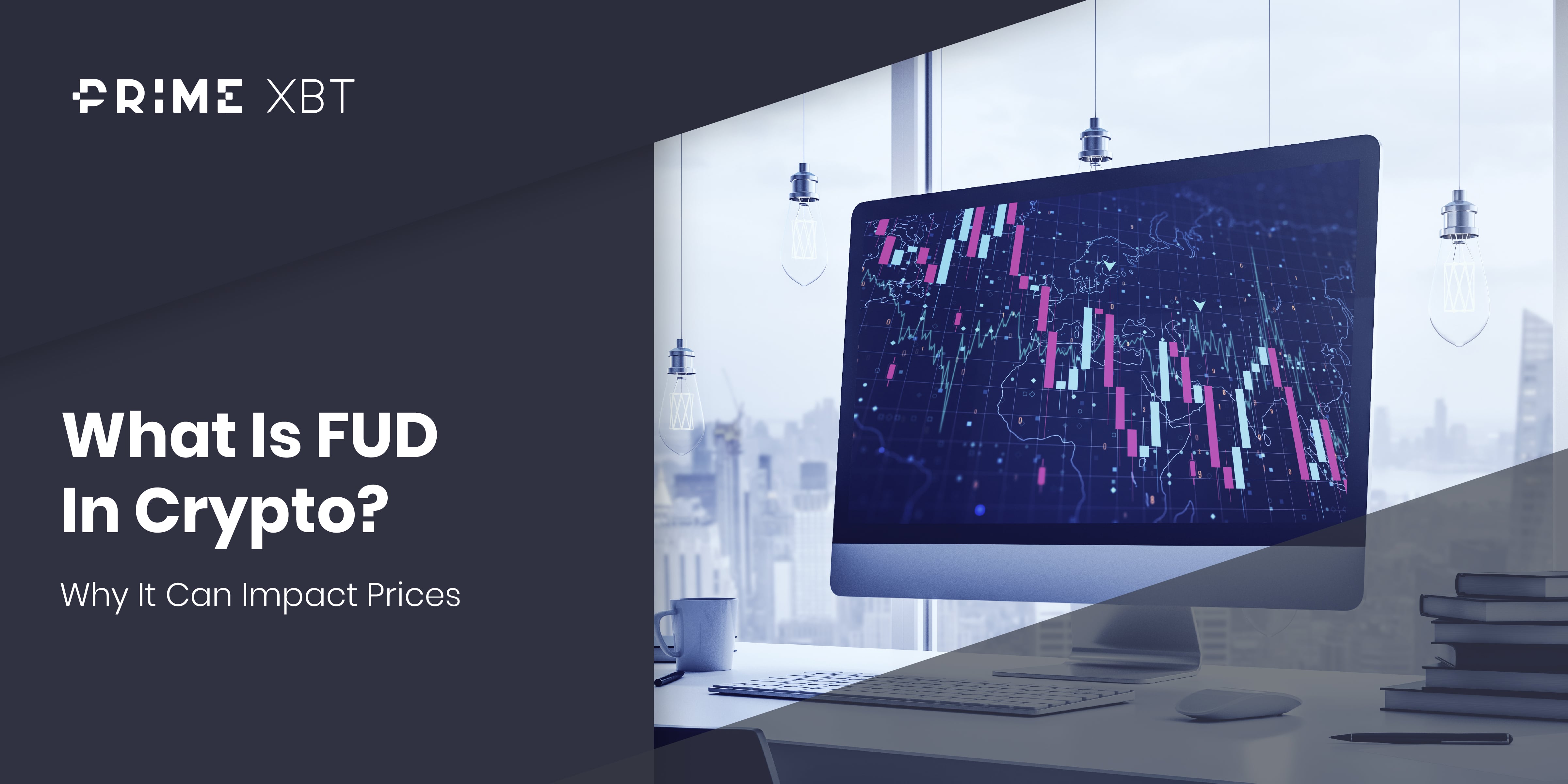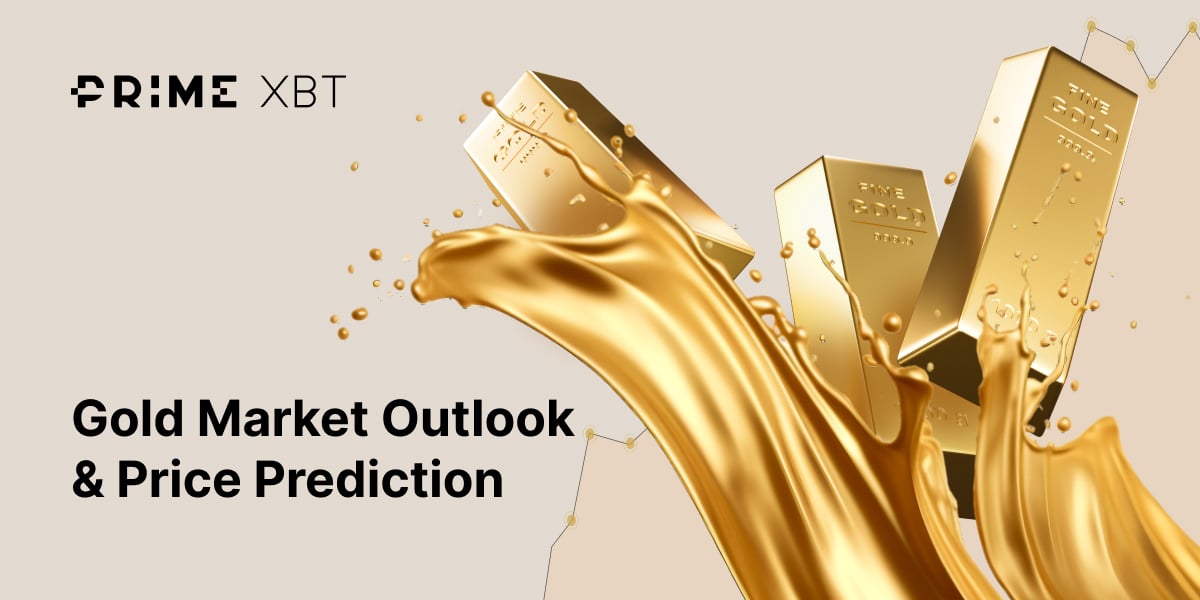The Forex market is huge. Almost 8 trillion dollars in daily transactions huge.
But what is it?
The Forex or Foreign Exchange Market is a globe-spanning decentralized network of providers that allows traders to take advantage of currency price movements.
Trading currencies is done in pairs, i.e., the U.S. Dollar “against” the British Pound Sterling. The reason that the two currencies are traded “against” each other, is due to the fact that when you buy a currency pair – you “buy” the one currency of the pair, while selling the other. When you “sell” a currency pair, you sell one currency and buy the other.
Most Forex brokers also offer leverage, a trading tool that allows you to place a bigger trade with less capital. This feature is also one of the reasons why this market is so popular.
Another benefit of Forex trading is the availability of data. The price of currencies is affected by multiple things, but these events are usually covered by the mainstream media. This makes analysing and making a more informed decision easier than other markets.
Key takeaways:
- The Forex market sees almost 8 trillion dollars in daily trading volume
- Currencies are traded in pairs
- Leverage allows you to make bigger trades with less capital
- Events that affect currencies are usually covered by the mainstream media
This article will cover Forex trading for beginners, pointing out everything you need to know, including the basics of trading Forex, potential trading strategies, leverage, margin and everything else you need to start trading today!
Understanding Forex trading

What is Forex trading?
The most straightforward method to trade Forex is to either buy or sell a currency pair.
When do you buy and sell currencies?
When you expect the price to increase, you “buy”, and when you think the price will drop, you “sell”. Because markets move in cycles, in theory, you could take advantage of both upward and downward price movements on the same currency pair at different times.
Your expectation when trading is to purchase at a certain price and close with the maximum difference from that original rate. Obviously also in the direction that is beneficial for your trade as mentioned above.
To trade Forex you first need a trading account, like the one PrimeXBT offers. The next step is to deposit so you have capital to trade with. Then you can use the PrimeXBT trading platform to start trading Forex, Cryptos, Commodities and Indices.
Before you run off and do that, though, you’ll need to know a few more things.
How does Forex trading work?
Before we start diving into the specifics of trading Forex, there are a few terms you should familiarise yourself with.
Important terms when trading Forex:
Base and Quote currency in Forex
When you visit brokers’ Forex trading platforms, you’ll see a lot of things flashing, numbers moving, and colours changing. Don’t worry all that movement and excitement is part of the reason Forex is probably the largest financial market in the world – all those things changing and flashing are people trading!
But just ignore that for a moment – look for a list of symbols: a series of three letters, a backslash and three more letters. Beginner Forex traders may not know what these six letters and a slash mean, but it’s really simple – it’s how currencies are abbreviated on the Forex market. Here are the most popular and frequently used abbreviations:
Major currencies in Forex
- U.S. dollar – USD
- Euro – EUR
- UK pound sterling – GBP (i.e. Great British pound)
- Australian dollar – AUD
- Japanese yen – JPY
- Swiss franc – CHF
- Canadian dollar – CAD
- New Zealand dollar – NZD
These currencies combine and become what are called “major currency pairs”, which are pairs that always involve USD.
The Majors or Major pairs in Forex
Although these might seem like a category of their own, and beginners Forex trading may expect them to behave similarly, they don’t.
For example, the USD/CHF is considered a “safe haven” and, as the name implies, increases in value or at least stays stable, when markets are volatile (meaning the prices change frequently and rapidly) or when there is geopolitical instability that causes the Foreign exchange market to move unpredictably.
USD/JPY is also considered a more stable pair – and is sometimes also referred to as a safe haven, which is great when things are moving unpredictably, but not great when currencies are increasing in a predictable and stable way.
Another relationship you may observe is with so-called Commodities currencies. These Commodity currencies’ values are closely connected to the value of Commodities that their economies export – the two in our list are AUD and NZD. As these Commodities increase in value, more of the local currency is required to purchase them, causing currency demand to increase, which in turn causes the value of the currency to increase.
What are spreads in Forex trading?
A spread is the difference between the price to buy the base currency and sell the base currency. This is also the fee that most no-commission brokers charge.
The difference between these two figures is measured in pips. One pip is usually the fourth decimal point in the price:
0.0002 – 0.0001 = 0.0001 or 1 pip
in a more “natural” scenario:
This is the current price of EUR/USD (at the time of writing) with a 1 pip difference
1.07293 – 1.07283 = 0.0001 or 1 pip
Lots in Forex
Currency trading is usually done in units of the pair. That might sound a little complicated, but it is really simple – just think of corn or wheat that are sold in bushels; you wouldn’t walk up to a farmer and say, “One wheat, please”. You could, but you would probably get laughed at.
Forex trading is the same way – because it wouldn’t really be exciting or profitable if you only made 20 or 40 pips per trade (if you need a refresher from the previous paragraph, that would only be 0.0020 and 0.0040 of a cent, respectively).
So, to ensure that even “small” price movements are impactful, a Forex trader will usually trade a lot of the currency pair or more. A lot is usually 100,000 units, but luckily, PrimeXBT also offers micro lots, which are only 1,000 currency units. And there’s yet another “but” that will let you trade with even less, keep reading to find out how leverage can multiply your capital so you can open a bigger trade with less money.
Leverage in Forex
Leverage is one of the most popular features of the Foreign exchange market because it allows you to increase the size of a trade using less capital.
For example PrimeXBT offers leverage up to 1000:1 so with $1 you could open a $1000 trade. Or theoretically you could open four $250 trades with that single dollar.
This means that a 1% movement
But what is leverage? It is essentially your broker lending you an amount so you can open a larger trade. In exchange, brokers require a small amount of your capital to be dedicated to margin; think of it as collateral for the extra funds they are offering you.
The trading strategy is that with the use of leverage, you will make enough to profit and cover the margin requirements of the trade.
Important terms you need to know to trade Forex
Spot Forex
Spot Forex is derived from the phrase “on the spot” because that’s how the settlement of trade happens – immediately (within the technological limitations of each broker). The delivery of the asset or contract happens at the current market rate.
Because we are talking about Forex trading, and that it is always done in pairs, that means you are buying the base currency while selling the quote currency at the current market rate.
CFDs
CFDs (an abbreviation for Contracts for Difference) allow you to trade an asset’s price without the obligation of owning the actual asset.
The benefit of this type of Forex trading strategy is the fact that you can trade during both upward and downward trends with access to leverage. This also allows you to quickly hedge if markets start moving against a trade you have open.
CFDs also do not carry the same fees associated with actually owning the underlying asset, including stamp duty and brokerage fees.
Bear market

A bear market is when prices are sluggish, dropping, or consolidating. The reason the bear is the symbol of a slow or contracting market is because it attacks with downward swipes. Not because it hibernates during the winter, that would make too much sense.
Bull market

The bull market is the opposite of the bear market – again, based on the way the animal attacks upwards with its horns. Not because it charges relentlessly towards it target, because that would make too much sense. When Forex traders say they are “bullish” on a certain pair or market, then that means they are expecting it to rise or they see it very positively.
Blue Chip Stocks
Blue Chip Stocks are generally considered Stocks that are not only high value but expected to grow steadily and predictably. Of course, for them to meet those requirements, they should be issued by well-established companies and have a relatively large market cap to remain unaffected by market fluctuations.
Examples of Blue Chip Stocks:
- General Electric
- Apple
- Nike
- Procter and Gamble
- Berkshire Hathaway
- Amazon
- Pfizer
Dividend
As you may know, when you buy Stock, it basically gives you partial ownership of the company’s capital and assets. Dividends are annual payments (generally, each company has its own governance) from the company’s profits or reserves.
Day trading
Day trading Forex is a very straightforward and popular method of Forex trading for beginners. When you day trade Forex, any trades you open, you close by the end of the day or the next day, taking advantage of any price movements that happen throughout the day.
The day trading strategy can involve either using analysis and data to open trades when the markets open or open and close multiple trades to take advantage of smaller price movements. This trading strategy is also called scalping, shaving a bit of profit of the top of smaller price movements.
If you use this trading strategy, you need to be aware of your broker’s fees, as this can cut into your profits.
Close
When trading Forex you close an open trade to profit or to avoid increasing losses.
Exchange
Exchange is a general term used for an online network or physical location where people go to trade various types of assets, including Forex. The New York Stock Exchange is probably the most famous (also known as Wall Street which is where the exchange is located in Lower Manhattan).
An example of an online exchange is Binance, Bybit and Coinbase, where Forex traders go to buy and sell Cryptocurrencies.
Broker
A broker is a company that acts as a bridge between exchanges and retail traders for a small fee. Certain CFD brokers actually act as the exchange themselves, matching “buy” and “sell” orders, allowing transactions to happen faster, more efficiently and at lower costs.
The OTC Forex Market is composed of these types of brokers.
Many brokers including PrimeXBT offer tons of services when trading Forex on their platform. These include analysis tools, a library of indicators you can apply to various charts, order books and graphic overlays that allow you to plot price levels or areas you’d like to highlight.
Types of currency pairs
Major currency pairs
There are seven major currency trading pairs. These include:
- EUR/USD
- USD/JPY
- GBP/USD
- USD/CHF
- AUD/USD
- USD/CAD
- NZD/USD
As you might’ve noticed all the major pairs involve the U.S. dollar – and technically any pair that includes the dollar can be considered a major but usually, the pairs in the lists above are the ones referred to as the “7 Majors”.
Minor currency pairs

Minor pairs when trading Forex are crosses of the currencies which are not USD.
Why is this important when talking about Forex trading for beginners? Minors can be a great way to diversify your portfolio during times when the USD isn’t offering many opportunities or the relationships between the minor currencies.
The most common minors foreign exchange currency pairs are:
- EUR/GBP
- EUR/JPY
- NZD/JPY
- GBP/CAD
- GBP/JPY
- CHF/JPY
- EUR/AUD
Not all minor pairs are created equal, however. For example CHF/JPY is composed of two “safe haven” currencies – the Japanese yen and the Swiss franc. When markets are extremely volatile or most Foreign exchange currencies are dropping, CHF/JPY might be a reasonable store of value.
Exotic currency pairs
Exotic currency pairs are composed of one of the currencies from the major pairs and currencies from developing or emerging economies. These pairs, compared to major and minor pairs, can be more volatile and lack the liquidity of their more popular counterparts but can be a nice addition to a well-diversified portfolio. At the same time Forex trading for beginners should usually focus on majors and minors as they offer a lot of information, move in a more predictable way and aren’t as susceptible to volatility.
Some exotic pairs include:
- Australian dollar/Norwegian krone – AUD/NOK
- Australian dollar/Polish zloty – AUD/PLN
- Australian dollar/Swedish krona – AUD/SEK
- Australian dollar/Singapore dollar – AUD/SGD
- Canadian dollar/Singapore dollar – CAD/SGD
- Swiss franc/Swedish krona – CHF/SEK
- Swiss franc/Singapore dollar – CHF/SGD
- Euro/Czech Republic koruna – EUR/CZK
- Euro/Hungarian forint – EUR/HUF
- Euro/Norwegian krone – EUR/NOK
- Euro/Polish zloty – EUR/PLN
- Euro/Romanian Leu – EUR/RON
- Euro/Russian ruble – EUR/RUB
- Euro/Swedish krona – EUR/SEK
- Singapore dollar – EUR/SGD
- Euro/Turkish lira – EUR/TRY
- Euro/South Africa rand – EUR/ZAR
- British pound/Czech Republic koruna – GBP/CZK
- British pound/Hungarian forint – GBP/HUF
- British pound/Mexican peso – GBP/MXN
- British pound/Norwegian krone – GBP/NOK
- British pound/Polish zloty – GBP/PLN
- British pound/Swedish krona – GBP/SEK
- British pound/Singapore dollar – GBP/SGD
- British pound/Turkish lira – GBP/TRY
- Mexican peso/Japanese yen – MXN/JPY
- Norwegian krone/Japanese yen – NOK/JPY
- Singapore dollar/Japanese yen – SGD/JPY
- Turkish lira/Japanese yen – TRY/JPY
- South Africa rand/Japanese yen – ZAR/JPY
- US dollar/Czech Republic koruna – USD/CZK
- US dollar/ Hungarian forint – USD/HUF
- US dollar/Israeli shekel – USD/ILS
- US dollar/Mexican peso – USD/MXN
- US dollar/Norwegian krone – USD/NOK
- US dollar/Polish zloty – USD/PLN
- US dollar/Romanian leu – USD/RON
- US dollar/Russian ruble – USD/RUB
- US dollar/Swedish krona – USD/SEK
- US dollar/Singapore dollar – USD/SGD
- US dollar/Thai baht – USD/THB
- US dollar/Turkish lira – USD/TRY
- US dollar/South Africa rand – USD/ZAR
What are the benefits of Forex trading?
Forex trading has numerous benefits. First, it is one of the biggest markets in the world. This means that there is a high level of liquidity, so your transactions are made quickly, helping you avoid the risk of slippage (this happens when you open a trade, but it is not immediately executed and can result in losses) and many daily opportunities.
Forex trading also involves something that most people are already familiar with – currencies. Unlike other instruments which have specific reports that directly influence their price, some of these reports come out only during very specific times throughout the year.
What are the risks associated with Forex trading?
Much like any type of trading or investing, Forex trading can carry some risks. The Forex market moves multiple times throughout the trading day and volatility increases around market openings and during market overlaps (i.e. when one market opens while another market is already open).
Luckily these hours and times of overlap are very easy to find and even easier to avoid.
Although an extremely valuable tool that can multiply profits, leverage can also amplify market movements, including negative ones. Stop loss, which closes your trade at a price that you consider your maximum risk and take profit, which closes your trade to protect your losses against a price reversal, can greatly limit your risk though.
Additionally, having incomplete information or without a strategy can cause traders to act impulsively and irrationally, allowing negative psychological responses to drive their trading.
How to trade Forex for beginners
Setting up your trading account
Setting up an account to trade Forex with PrimeXBT is a straightforward process. PrimeXBT is a platform that offers leveraged trading of Cryptocurrencies, Forex, Commodities, and Indices. Here’s a step-by-step guide to help you get started:
- Visit the PrimeXBT website: Open your web browser and go to the PrimeXBT website.
- Sign up: Look for the “Sign Up” or “Register” button on the homepage and click on it. You’ll be directed to the registration page.
- Enter your information: Fill in the required information such as your email address, password, and country of residence. Make sure to create a strong and secure password.
- Verification: After filling out the registration form, you may need to verify your email address. Check your email inbox for a verification link from PrimeXBT and click on it to confirm your email.
- Complete KYC verification (if required): Depending on your country of residence and the regulations in place, PrimeXBT may require you to complete a Know Your Customer (KYC) verification process. This typically involves providing personal identification documents such as a passport or driver’s license and possibly proof of address. Follow the instructions provided by PrimeXBT to complete the KYC process.
- Log in to your account: Once your registration is complete and any necessary verifications are done, log in to your PrimeXBT account using the credentials you provided during registration.
- Deposit funds: Before you can start trading, you’ll need to deposit funds into your PrimeXBT account. Navigate to the “Deposit” section of the platform, where you’ll find various deposit options such as Bitcoin, credit/debit cards, or bank transfers. Choose the deposit method that works best for you and follow the instructions to complete the transaction.
- Navigate to the Forex trading section: After your deposit is credited to your PrimeXBT account, navigate to the Forex trading section by clicking on Trade -> Global Markets. PrimeXBT offers a wide range of Forex pairs for trading that you can see from the Watchlist, so you’ll have plenty of options to choose from. If you can not see the Watchlist, click on the “plus” symbol in the upper left and click on “Watchlist”.
- Place a trade: Once you’ve selected the Forex pair you want to trade, you can place a trade by entering the amount you want to trade and selecting whether you want to buy (go long) or sell (go short) the currency pair. You can also set stop-loss and take-profit orders to manage your risk. You can click on “Trade” next to the asset’s price in the Watchlist or setup one and two click trading. This option is in a drop-down menu in the middle top of the page, which is set to “Regular Trading” by default. Follow the on-screen steps and once activated, clicking on the “Buy” or “Sell” on the Chart will immediately execute the trade.
- Monitor your Forex trades: After placing a trade, monitor your positions closely using the trading interface provided by PrimeXBT. Keep an eye on market movements and manage your trades accordingly.
- Withdraw profits (Optional): If you’ve made profits from your trades and you wish to withdraw funds from your PrimeXBT account, navigate to the “Main” section under “Wallet” and follow the instructions to initiate a withdrawal.
- Keep learning and practicing: Trading Forex can be complex and risky, so it’s essential to continue learning and practicing your trading skills. PrimeXBT offers educational resources and demo accounts where you can practice trading with virtual funds without risking real money.
By following these steps, you should be able to set up an account to trade Forex with PrimeXBT and start trading currencies on the platform. Remember to trade responsibly and never risk more than you can afford to lose.
Analysing the market
Analysing the market using PrimeXBT’s trading platform involves several key steps to make informed trading decisions. Firstly, utilize the trading platform charting tools, such as candlestick patterns, technical indicators (e.g., RSI, MACD), and drawing tools to identify trends and potential entry/exit points. Additionally, leverage the trading platform real-time market data to stay updated on price movements, volume changes, and order book dynamics.
Next, conduct thorough fundamental analysis by accessing news feeds, economic calendars, and market sentiment indicators integrated into PrimeXBT’s trading platform. This allows traders to gauge the broader market outlook and potential reasons driving asset prices.
Furthermore, utilize the trading platform risk management tools, including stop-loss and take-profit orders, to lower the potential for losses and lock in profits. Additionally, consider using PrimeXBT’s Copy Trading features to follow successful traders and learn from their trading strategies.
Regularly review and adapt your analysis based on market conditions and performance metrics provided by PrimeXBT’s platform to refine your trading approach and enhance profitability.
Making your first trade
For a Forex trader stepping into their first trade, understanding key concepts is very important. Firstly, grasp the basics of Forex trading, including currency-pairs, bid/ask prices, and pip movements. Next, familiarize yourself with market analysis techniques such as fundamental and technical analysis to make informed decisions.
Risk management is also really important; determine the amount of capital you’re willing to risk per trade and set stop-loss orders to limit potential losses. Additionally, practice discipline and patience, avoiding emotional reactions to market fluctuations.
Choose a reputable broker with favourable trading conditions like PrimeXBT, which offers competitive spreads, reliable execution, and super helpful customer support.
Stay updated on global economic events and news that can impact currency prices, as awareness of market dynamics enhances trading strategies. Lastly, maintain a trading journal to track Forex trades, analyse performance, and refine your approach over time.
Risk management
You can manage risk in multiple ways on the Forex market. Trading strategies can help you define your maximum risk per trade, the types of pairs you’d like to trade and the risk management tools you’ll use to protect both your Forex trades and Forex trading account. Stop loss protects against losses going beyond your maximum risk, take profit closes a profitable trade to avoid the market reversing and hedging (i.e. a trade that is the opposite of a trade that you currently have open), are all trading tools or trading strategies, you can use.
Conclusion
In conclusion, diving into the Forex market requires a solid understanding of its fundamentals and the tools available to navigate its complexities. Using PrimeXBT’s trading platform, traders can harness charting tools, real-time market data, and fundamental analysis to make informed decisions. Managing risk through tools like stop-loss orders and take-profit orders is crucial to safeguarding investments. Additionally, leveraging PrimeXBT’s Copy Trading features and continuously working on your trading strategies can lead to improved profitability over time. As traders venture into their first Forex trade, prioritizing knowledge of pairs, bid/ask prices, and risk management strategies is paramount. By staying up-to-date with global economic events and maintaining disciplined trading practices, beginners can set themselves up for success in the exciting world of Forex trading.
Is Forex trading good for beginners?
Yes, the amount of news and data available when you start trading Forex makes it great for new traders.
How much money do I need to start Forex trading?
With PrimeXBT you can start trading with as little as $10.
How do I teach myself to trade Forex?
You can study all of the educational material PrimeXBT offers, or you can try PrimeXBT's Copy Trading, which allows you to follow successful traders, and copy their trades until you feel comfortable trading on your own.
How do beginners learn Forex trading?
PrimeXBT offers a huge library of educational material related to trading Forex. So you know what do before you make your first Forex trade.
Risk warning: Our products are complex financial instruments which come with a high risk of losing money rapidly due to leverage. These products are not suitable for all investors. You should consider whether you understand how leveraged products work and whether you can afford to take the inherently high risk of losing your money. If you do not understand the risks involved, or if you have any questions regarding our products, you should seek independent financial and/or legal advice if necessary. Past performance of a financial product does not prejudge in any way their future performance.




